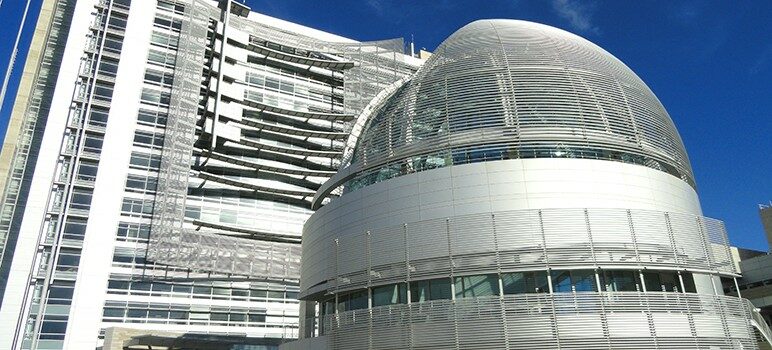San Jose will no longer wait for citizen complaints to remove graffiti, junk cars and trash from city streets in downtown and other selected areas.
A new code enforcement policy announced Tuesday pledged to proactively clean up the city.
San Jose Mayor Matt Mahan, City Councilmember Omar Torres and city staff announced the launch of the initiative to better manage graffiti, overgrown vegetation, inoperable vehicles, and improper storage of items, trash, and debris in downtown and other focus areas.
The San Jose City Council approved the program unanimously on Tuesday.
The new pilot program, the Focus Area Service Team (FAST) within San Jose's Code Enforcement Division, will enable proactive code inspections starting in areas of the city most impacted by blight. The code enforcement inspectors will do special “blight inspections” and enforcement from August through January 2024.
Implementation of this pilot will allow FAST to proactively identify code violations and begin the process to remedy them without having to rely on community members to initiate the process, according to Mahan. The model will consist of three steps: targeted outreach and education, proactive inspections and expedited enforcement.
The program aims to ensure that private property owners are maintaining property, cleaning up graffiti, fixing broken windows and creating a safe and clean environment to live in, Mahan said.
“We can't allow absentee property owners to shift that burden on to the community,” the mayor said.
Council Districts 3, 5 and 6 had the highest blight complaints for fiscal year 2022-2023, according to the city.
The council last week acopted a "back to basics" budget, putting significant money into addressing blighting and cleaning up, Mahan said.
“FAST is a group of dedicated people who will be proactively walking our streets in target areas downtown, the Santa Clara corridor, and other parts of our city where they will be in a position to proactively address blight,” Mahan said. “Writing citations, following up with property owners, getting them into compliance, and ensuring that we hold property owners accountable for maintaining clean and safe structures in our city.”
One challenge to being proactive, according to Mahan, has been the vacancies in the Code Enforcement Division. But in the last six months, the vacancy rate has dropped by over 15 percentage points, and the inspector role within Code Enforcement is fully staffed, he said.
The team will not rely just on complaints and can respond quickly, equitably and evenly. With the vacancies filled, the team is better positioned to be proactive. It will also allow them to catch up with backlogs and do re-inspections faster, he said.
“We want our business corridors to be clean and appealing for everyone,” Torres said. “And the amazing part of this program is it just doesn't focus on code violations. It tackles blight head-on by taking care of both issues at the same time, we make our city more livable and attractive. It's a win-win situation for not only our city but our small businesses as well.”
Local business owners and leaders told the council about their experience with blight and its impact on their businesses.
“As the association we do really emphasize to the business owners, do your part, be responsible,” said Chris Patterson-Simmons, a business owner and president of the East Santa Clara Street Business Association. “If you see a trash bag in the dumpsters, like pick up the trash, just pick it up and throw it in the garbage. And once that's done, we can kind of combat this situation by being responsible ourselves.”
According to Mahan, the way to make the city cleaner and safer and ensure that everyone is housed is by holding everybody accountable, from City Hall to private property owners.


What a concept. ? San Jose will still remain a bush league city.
It’s only blight if you can afford to pay a fine. If you are in an encampment, they will continue to look the other way.
Another way to penalize businesses and private property owners, while still not addressing the biggest cause of blight in San Jose.
The city is actively addressing the terrible homeless problems, encampments included. But, why should private property owners be allowed to let blight continue? Do they get a free pass?
baaaaaahahahahahahahaha
sure they will
Omar can not help but recycle used and failed solutions to problems that don’t exist. Failing to recognize there was no blight downtown until Cindy Chavez bought herself an election and blighted D3 to mooch federal funds. At least during that period they had a “program” in which the city paid to have “poorer” home owners houses painted.
This neo liberal babble has to end. These incompetent policy makers need to resign or be recalled.
I need to know, are they going to address their own properties first? Meridian near 280 has 2 foot high dry grass. All along the guadeloupe creek trail it’s visible from 87.
I called the city 311 junk pick up and my appt was the 29th of june. Tell me the reason why the items that i had put out were not taken by city. I saw them drive by and stop for a short moment but left right away. i did put everything out properly. It was right next to the curb about less than a foot away. Did they not take items because it was not in the street? There isnt room to put these items out with our trash cans all out and yard waste and parking, there was no where else. Also i usually do put things in that spot and never had issue before